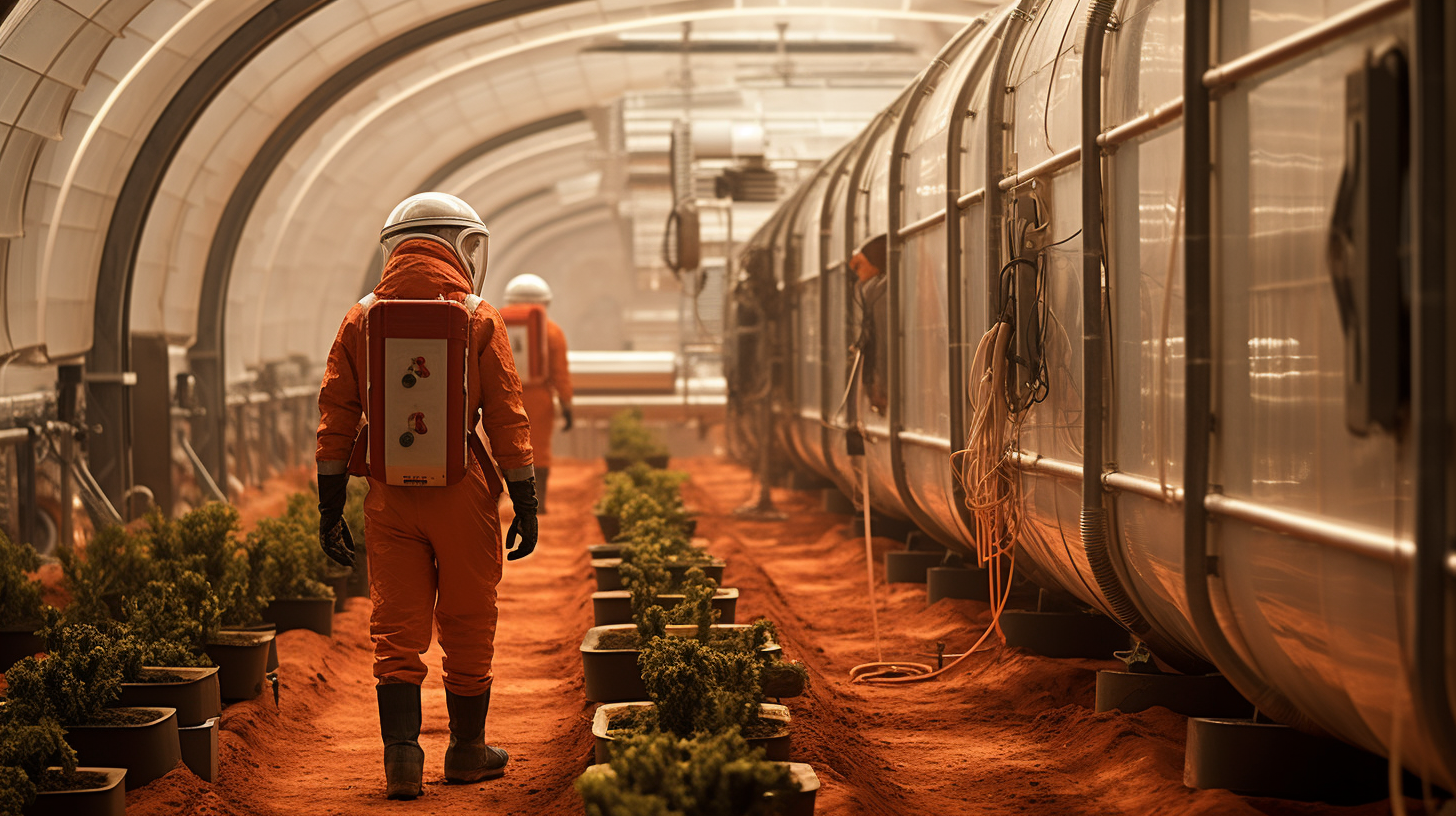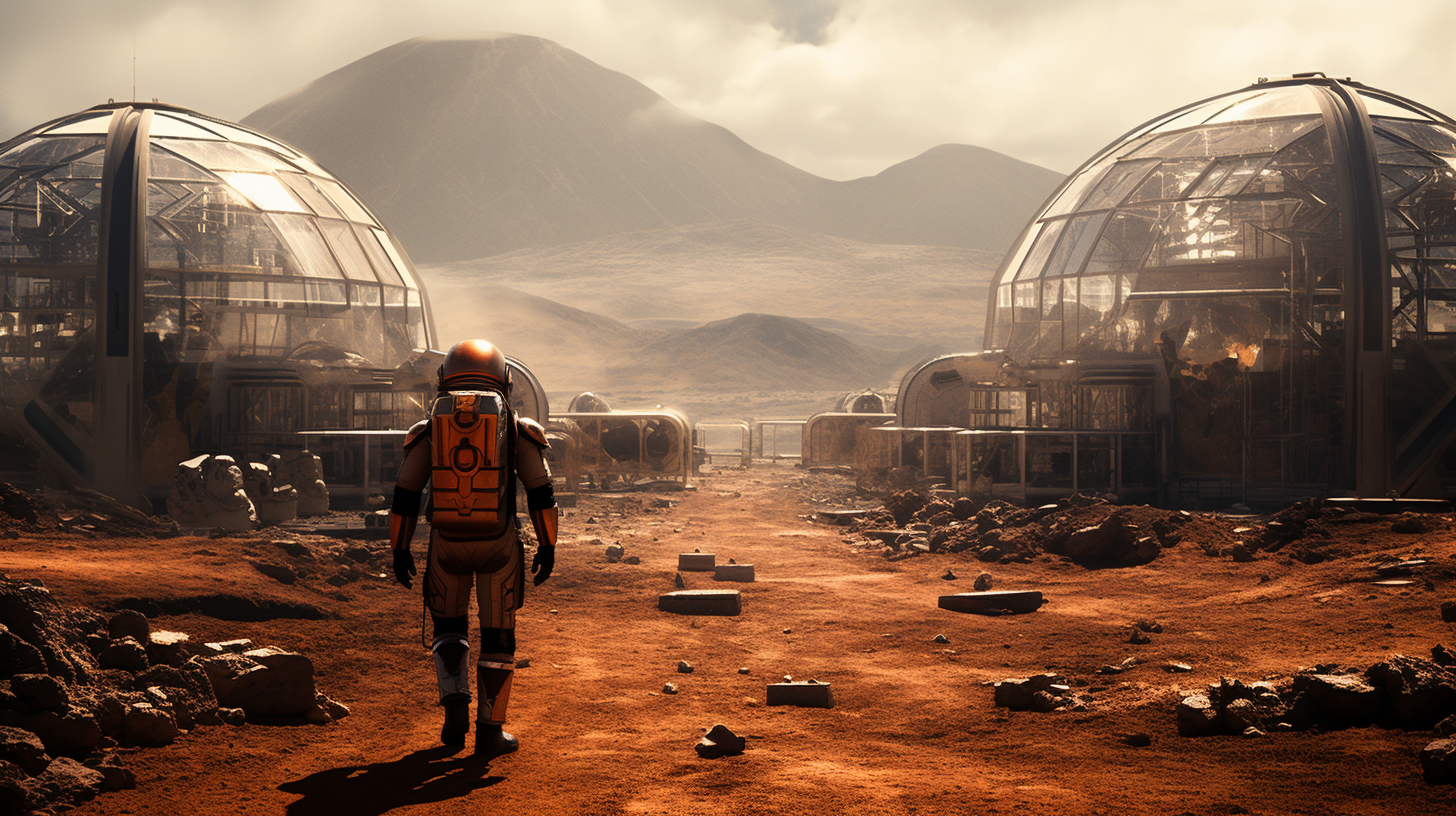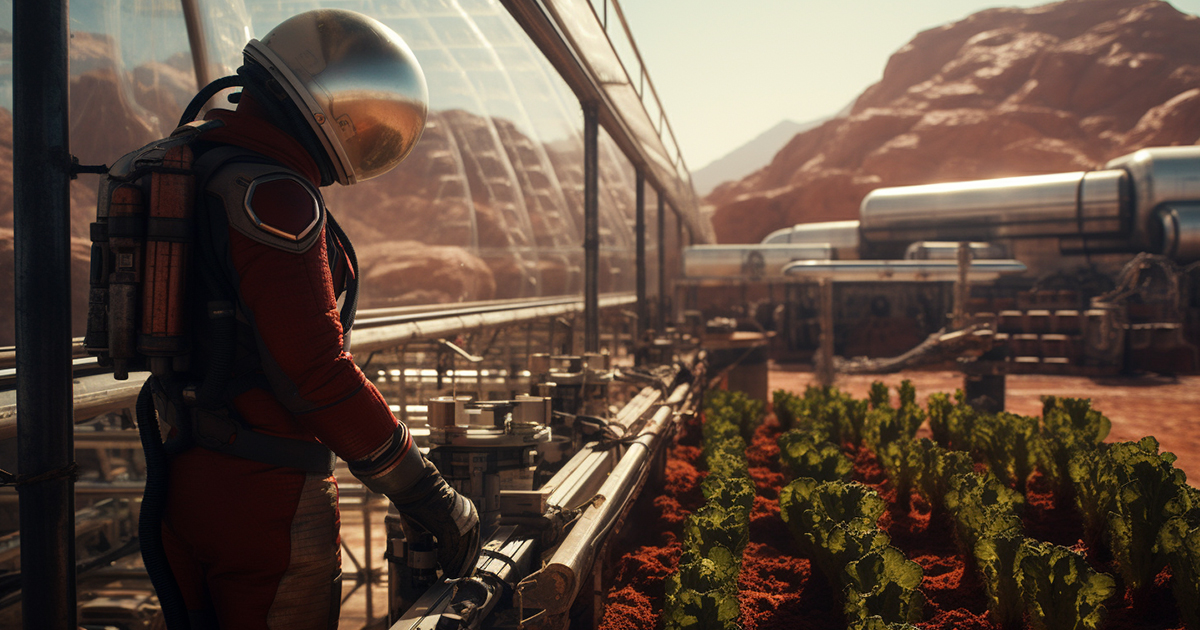Embarking on a Journey: Unveiling the Allure of Mars
For centuries, the allure of Mars has captivated human imagination. As we stand on the brink of turning this celestial fascination into a tangible reality, our focus transitions from the romanticized depictions in popular culture to the pragmatic aspects of establishing a sustainable human presence on the Red Planet. This narrative will delve into the innovative strategies being pursued to convert the desolate Martian terrain into a potential human habitat.
Surviving the Martian Enigma: Embracing the Extremes
Known as the “Red Planet,” Mars showcases extreme dichotomies. With gravity just 38% of Earth’s, temperatures swing wildly from a scorching 70 degrees Fahrenheit in the day to a bone-chilling minus 100 degrees Fahrenheit at night. Additionally, high radiation levels and frequent dust storms add to the formidable survival challenges on Mars.

Charting the Course to Martian Habitats: Overcoming Adversities
The roadmap for colonizing Mars by NASA kicks off with the deployment of robotic explorers. These mechanical pioneers are entrusted with building shelters, rovers, and life-sustaining modules. Subsequently, crucial provisions and materials are dispatched to lay the foundation for future human settlements. This methodical approach acknowledges the immense hurdles posed by Mars’ hostile environment.
Innovative Agriculture Techniques on Martian Soil
One intriguing facet of Martian colonization is the necessity to grow crops on a planet vastly different from Earth. Establishing agricultural practices is vital for the sustainable future of a Martian outpost, as reliance on imports from Earth is neither feasible nor practical.
Experts are exploring the complexities of farming on Mars. While planting traditional crops such as potatoes and cabbages may seem simple, the reality is far more intricate. Microbial behavior in this alien environment presents challenges that call for creative solutions.

An intriguing experiment conducted in the Netherlands, using soil resembling Martian conditions, demonstrated successful crop cultivation. Carrots thrived in these conditions, but achieving self-sustainability will require extensive time and research. It might take centuries before sufficient food production can support an independent Martian population.
Envisioning the Distant Future: Transforming Mars Through Terraforming
In the quest for complete autonomy on Mars, the concept of terraforming emerges as a key consideration. Terraforming involves intentionally altering the Martian environment to make it more Earth-like, conducive to surface farming.
Diverse terraforming ideas have been proposed, many focusing on melting the polar ice caps to release carbon dioxide into the Martian atmosphere, thickening it and creating conditions suitable for liquid water. However, experts concur that such transformations remain a distant prospect, potentially centuries away.
Explore the Featured Video:
Contemplating the Expedition: Embracing a New Frontier
The journey towards establishing a human presence on Mars is a complex and multifaceted undertaking encompassing technology, agriculture, and the visionary idea of terraforming. While Mars continues to intrigue us with its mysteries, the endeavor to reshape it for human life necessitates steadfast commitment and scientific expertise.
As we gaze into the vast expanse of space and set our gaze upon the Red Planet, the challenges ahead may seem daunting, but so do the possibilities. Mars symbolizes not only a potential new habitat but also a testament to humanity’s persistent spirit and relentless pursuit of the unknown. Over time, the dream of colonizing Mars may materialize, launching us on an extraordinary journey that will forever change the course of our history.
